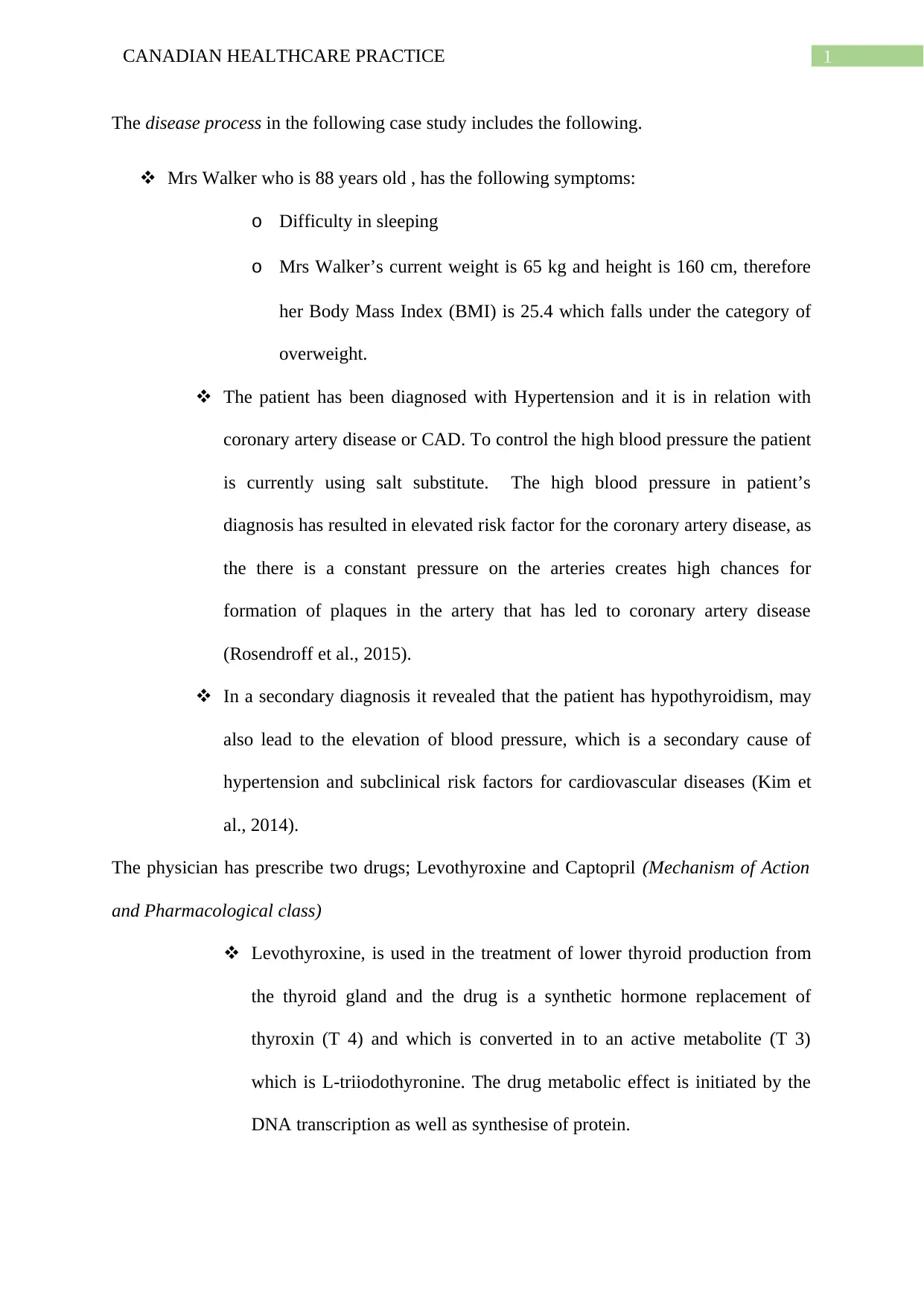Canadian Healthcare Practice
VerifiedAdded on 2023/04/21
|4
|869
|321
AI Summary
This document discusses a case study of a patient with hypertension and hypothyroidism, and the prescribed medications Levothyroxine and Captopril. It explores the disease process, diagnosis, rationale behind the medications, dosage calculation, and nursing interventions.
Contribute Materials
Your contribution can guide someone’s learning journey. Share your
documents today.
1 out of 4









![[object Object]](/_next/static/media/star-bottom.7253800d.svg)